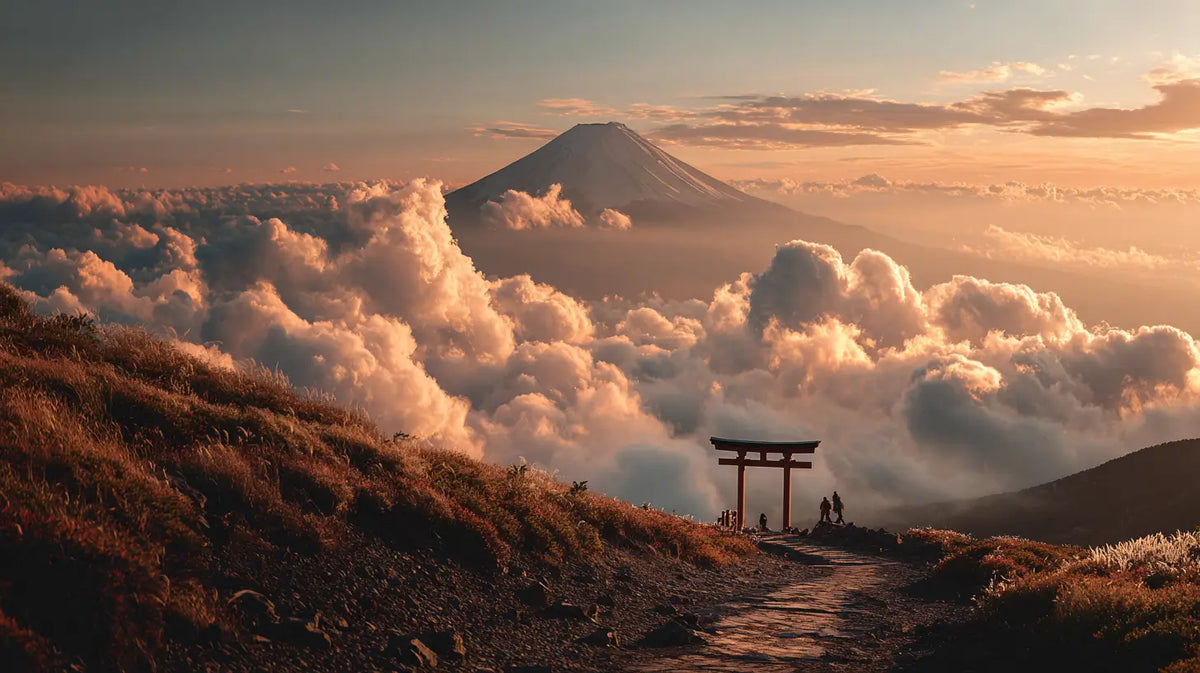
The Complete Guide to Visiting Mount Fuji: Routes, Hikes, and Insider Tips
|
Time to read 5 min
|
Time to read 5 min
IN THIS ARTICLE
Late autumn (October to November) and early spring (March to April) offer the clearest views, with the iconic snowcap fully visible. Avoid the rainy season in June.
Pro Tip: Weekdays are less crowded than weekends, especially in mid-July and late August.
To Kawaguchiko (Fuji Five Lakes area): Take the JR Chuo Line from Shinjuku to Otsuki, then transfer to the Fujikyu Railway.
To Gotemba (for Subashiri and Gotemba routes): Take the JR Tokaido Line to Kozu, then transfer to the Gotemba Line.
Highway buses from Shinjuku, Tokyo Station, or Shibuya directly reach the Fifth Stations (starting points of hikes) and Kawaguchiko.
Insider Tip: Buses are often more convenient and cheaper than trains, especially with luggage or during peak seasons.
Start: Fuji Subaru Line 5th Station
Elevation Gain: ~4,400 ft
Round Trip Time: 6-10 hours
Pros: Most amenities, many mountain huts, night hiking support
Cons: Crowded
Start: Subashiri 5th Station
Elevation Gain: ~6,500 ft
Round Trip Time: 7-11 hours
Pros: Forested lower trail, fewer crowds
Cons: Merges with Yoshida near the top, can get congested
Start: Gotemba 5th Station
Elevation Gain: ~8,500 ft
Round Trip Time: 8-14 hours
Pros: Least crowded, more solitude
Cons: Longest and most physically demanding
Start: Fujinomiya 5th Station
Elevation Gain: ~4,300 ft
Round Trip Time: 5-8 hours
Pros: Fastest ascent
Cons: Steeper, fewer facilities than Yoshida
For most healthy and prepared hikers, Mount Fuji can be climbed without a guide. However:
First-timers may benefit from a guided tour for peace of mind.
Winter climbs (October to May) require technical gear and expert guidance.
Several reputable English-speaking operators offer guided summit hikes, often including overnight stays in huts.
Clothing: Layered hiking clothes, including base layers, fleece, waterproof jacket, gloves, and hat.
Shoes: Sturdy, broken-in hiking boots.
Gear: Headlamp, trekking poles, sunscreen, sunglasses, reusable water bottles.
Optional: Oxygen canister (available at stations), altitude sickness medication
Cash: For mountain huts, toilets, and vending machines (cards often not accepted)
Pro Tip: Temperatures at the summit can drop below freezing even in August. Be prepared.
Great for sightseeing and photography.
Plenty of hotels, ryokan (traditional inns), and guesthouses.
Known for onsen (hot springs) and views of Fuji.
A bit further but offers a relaxing base.
Convenient for Subashiri or Gotemba trail hikes.
Less touristy, but fewer lodging options.
Hotel Konansou (Kawaguchiko): Luxury with onsen and Fuji views
K’s House Mt. Fuji: Budget-friendly hostel with a social vibe
Fujikawaguchiko Onsen Konanso: Great for couples or families
Start early : Even for a sunrise hike, plan to reach the summit before dawn (2-3 am departure from a hut).
Book your mountain hut early , especially on the Yoshida Trail. Most can be booked online (some via phone only).
Acclimatize gradually : Spend time at the Fifth Station before climbing.
Stay hydrated , but drink slowly to avoid altitude headaches.
Bring cash : You’ll need it for rest stops, food, and emergencies.
Absolutely. Whether you reach the summit or simply stand in awe from a distance, Mount Fuji is more than a destination—it's a cultural and spiritual experience. With the right preparation, it can be one of the most rewarding parts of your trip to Japan.
Take your time, plan smart, and don’t forget to look up and breathe it all in. Japan's sacred peak is waiting.











